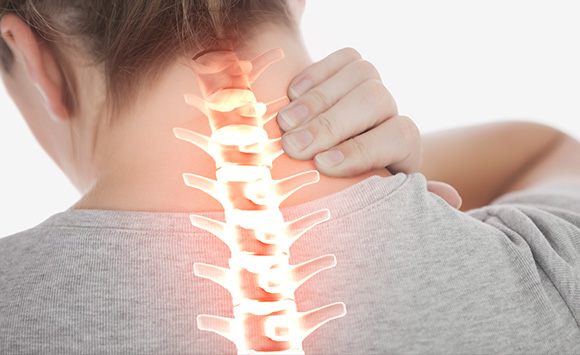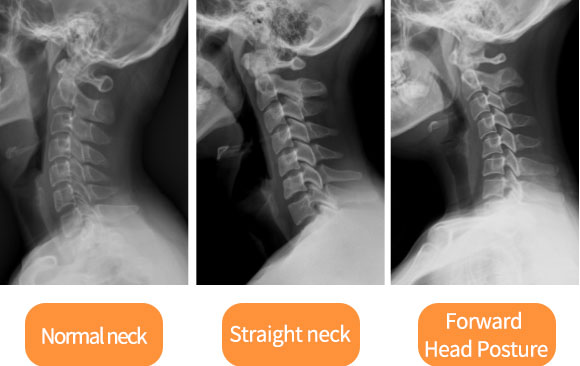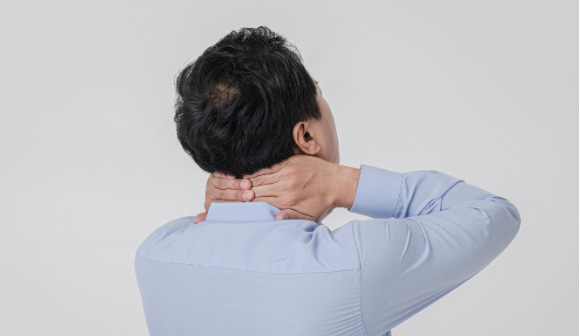
Medical Information
Neurosurgery
- Orthopedic Surgery
- Neurosurgery
- General Surgery
- Pediatrics and Adolescents
- Emergency Medicine
- Kidney Medicine
- Cardiology
- Endocrinology
- Respiratory Medicine
- Gastroenterology
- Family Medicine
- Neurology
- Gynecology
- Dental Clinic
- Anesthesiology and Pain Medicine
- Occupational Environmental Medicine
- Radiology
- Diagnostic Laboratory Medicine
Neurosurgery
Cervical Disc
There is a structure called a disc that absorbs shock between neck bones. When the disc comes out and compresses on the nerve, it is called cervical herniation. The cervical vertebra is anatomically small and the surrounding muscles and ligaments are relatively weak, so there is a high risk of the disc coming out after it is shocked even with a small impact.

Symptoms of Cervical Disc
Along with a back pain, you can feel radiating pain or numb in your leg.

Treatments of Cervical Disc
-
Conservative Treatments
At the early stage, a local fixation using braces, medication, or physical therapy with traction treatment can be performed to reduce pain and nerve edema.
-
Non-Surgical Treatment
● Nerve Blocks
A surgeon finds the nerve branch that causes the pain and injects a drug to treat the pain.● Epidural Neuroplasty
A surgeon finds the cause of pain by inserting a 1mm small catheter and injects special medication.
Performed under local anesthesia, it takes less than 30 minutes. A thin catheter does not leave a scar.● Nucleoplasty
A surgeon inserts a thin needle into the disc and applies low-temperature and high-frequency heat to it so that the protruding disc can be recovered.
The procedure can be completed in about 15 minutes under local anesthesia and there is little risk with quick recovery. -
Surgical Treatments
● Microdiscectomy
It is the most frequently performed surgery among cervical disc surgeries. It is a safe surgical method with minimal incisions using a microscope. A patient can be sure of fast recovery and little chance of recurrence.● Artificial Disc Replacement
It is a surgery to remove a damaged disc and replace it with an artificial disc similar to a normal disc.
There is no pain, no restriction of neck movement, and no need to wear orthosis. You can go back to your daily life immediately after surgery.
Forward Head Posture
While a normal neck has a C-shaped curve, a patient with forward head posture has an I-shaped or an inverted C-shaped neck after the neck is deformed. The neck can be bent like a turtle. This disease is also called turtle neck syndrome because its forward posture resembles a turtle's neck. It compresses the muscles around it and causes various symptoms including stiff shoulders, numb hands, and chronic headaches. When the movement of the body is restricted due to the tension of the surrounding muscles, the affected area is weakened and there is a risk of cervical disc herniation, myofascial pain syndrome, and neck disc.

Ossification of Posterior Longitudinal Ligament
Ossification happens to the posterior longitudinal ligament, which maintains the cervical vertebrae and hardens due to various causes. And then it causes pain, compressing the nerve which passes through the spinal canal.
As the posterior longitudinal ligament becomes hard and gradually enlarges, you can feel numb or loss of sensation in the arms and hands. In severe cases, paralysis may occur. At the early stage, pain and pressure in the neck area can appear, and the symptoms are similar to those of a neck disc.

* In rare cases, bleeding, infection, and blood clots may occur during surgery.


